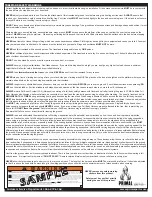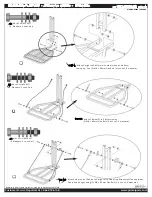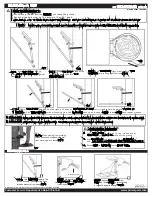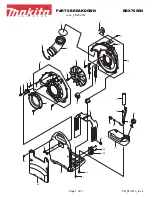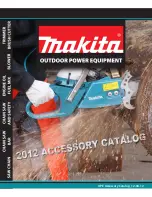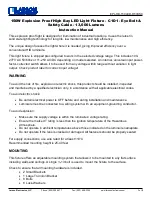
Distributed by Primal Vantage Company Inc. 685 Route 10 East, Randolph, NJ 07869
Customer Service Department 1-866-972-6168
www.primalparts.com
PROPER CARE AND MAINTENANCE:
• Inspect for defects (damage, rot, corrosion, cracks, freezing, excessive heat, etc.) before every use is required. Do not use if damage is detected or
suspected.
• Ameristep recommends periodically re-tightening and/or replacing hardware (supplied by Ameristep), including bolts, nuts, washers, rope, straps,
cord, etc.
• Read and understand the manufacturer’s warnings, expiration date and instructions on how to use and how to properly adjust the harness.
• Practice the use of a full body harness at ground level in the presence of a responsible adult to experience the feeling of hanging suspended before using in a
hunting environment.
• The length of the harness tether must be minimized at all times. It should be adjusted so that it is above the head with no slack (snug) in the sitting position
and you should have the minimum amount of slack possible when climbing.
• Never allow the tether strap to get under your chin or around your neck.
• If the hunting location is unknown by anyone and communication efforts are unsuccessful, you must have a personal plan for recovery/escape because
prolonged suspension in a harness can be fatal. It is important to exercise the legs by pushing against the tree or doing other forms of continuous leg exercises
to avoid blood pooling while being suspended. Hunters with varying degrees of physical fitness may require different plans to recover/escape the effects of
prolonged suspension. Have a personal plan and practice it in the presence of a responsible adult before leaving the ground. No one escape/rescue plan will
work for every hunter on every tree in every circumstance. Only you can determine the best recovery/escape plan for your hunting situation and you must have a
recovery/escape plan for your situation before leaving the ground.
• A suspension relief device must be on your person and readily accessible while using a harness. This device will allow the user to relieve the load on the lower
extremities if suspended in a harness and help maintain circulation in the legs and prevent suspension trauma (blood pooling). Be sure to follow manufacturers’
directions on the safe use of any suspension relief device.
• Hunt from the ground when self-recovery/escape ability is absent.
• There is time to make a correct decision on what action to take if a fall occurs while wearing a full body harness. It is important to remember, “DO NOT
PANIC.”
Remain calm and implement your practiced rescue, relief and recovery plan.
F A S ( F A L L A R R E S T S Y S T E M )
• When hunting from a tree stand, falls can occur at any time after leaving the ground causing injury or death.
• Always wear a Fall Arrest System (FAS), comprising a full body harness, at all times after leaving the ground. You must stay connected to the tree at
all times after leaving the ground while using climbing or hang-on stands. Single safety belts and chest harnesses are no longer allowed and should
never be used. If you are not wearing a full body harness properly attached to the tree to protect you from a fall, do not leave the ground.
• Read and understand all of the manufacturer’s warnings and instructions and use all safety devices provided by the manufacturer. Contact the
manufacturer for any questions. Failure to do so could result in injury or death.
• Never exceed the total weight limit of a tree stand.
• Never use a tree stand while taking drugs (even prescription drugs) or alcohol.
• Never use a tree stand during inclement weather such as rain, lightning, windstorms or icy conditions and end your hunt and return to the ground if
inclement conditions arise.
• Never use a tree stand when feeling ill, nauseous or dizzy, or if you have a prior medical condition that could cause a problem i.e., heart condition,
joints that lock-up, spinal fusions, etc. or if you are not well rested.
• Never use a tree stand on a dead, leaning, diseased or loose barked tree or on a utility pole.
• Never rely on a tree branch for support
• Never jump or bounce on a tree stand to seat it to the tree.
• Pull up a bow, backpack, firearm or other equipment only after being secured in the tree stand and a firearm must be pulled up with it unloaded,
chamber open and muzzle down.
• Always inform someone of the hunting location, where the tree stand will be located and the expected duration of the hunt.
• A signal device, as a mobile phone, radio, whistle, signal flare or personal locator device (PLD) must be on your person and readily available at all
times.
• Inspect the tree stand and all safety devices each time before use and do not store a tree stand outdoors when not in use.
• Never modify your stand in any way by making repairs, replacing parts, or altering, adding or attaching anything to it except if explicitly authorized in
writing by the manufacturer.
• Practice installing, adjusting and using your tree stand at ground level prior to using it at elevated positions.
• Instructions (written and video) should be kept in a safe place and reviewed at least annually. It is the responsibility of the tree stand owner to
furnish the complete instructions to any person who borrows or purchases the tree stand.
• The use of a lineman’s/climbing belt is required when installing or removing a hang-on tree stand to stabilize the user with the tree.
• Be sure that the full body harness is attached to tree before stepping down onto the platform. When using a climbing/lineman’s belt, be sure not to
detach belt until you are on the stand platform, tree strap is installed and your tether has been secured to the tree strap.
• Correct tightening and adjustments of chains, cables, straps, etc. are critical to stable hang-on tree stand installation. All tree stand contact points
must be in contact with the tree before you step onto your stand.
• Never leave a tree stand in a tree for more than two weeks since weather or animals could cause damage. The elements and excessive U/V
exposure can degrade components of stand. Tree growth can also cause stress and damage to straps and buckles.
• Use a haul line to raise and lower the tree stand. Never climb with anything on your back.
• A full body harness with lineman’s/climbing belt must be worn at all times while installing or removing any hang-on climbing aids.
• Climbing aids (stick ladders, sectional ladders, steps, etc.) must extend above the platform to allow the user to step down onto the platform. Never
step up to your stand from a climbing aid.
• Sectional ladders and steps should be spaced on the tree to insure each step is no more than 18 inches apart.
• Check every stick ladder section connection every time you use the stick ladder before you leave the ground. If stick ladder sections are separating,
do not use the stick ladder.
T R E E S T A N D S A F E T Y
©2012 (rev. 11/11)



